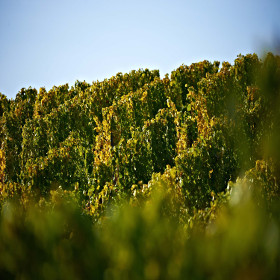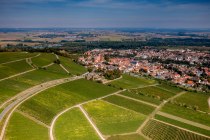Winery Martinshof
The MARTINSHOF is located on the edge of the picturesque wine village Dienheim, nestled in the best vineyard locations in Oppenheim. Here the vines grow on about 30 million years old marine deposits. The mixture of limestone and clayey deposits is the cradle of Riesling. But with its typical Rheinhessen portfolio, the estate has much to offer. For example, on the hills between Nierstein and Dienheim, classic Pinot varieties and large French vines grow, from which Achim Martin vinifies pure and long-lasting red wines. A true Rheinhessen family business. Under the leadership of Achim and his wife Anke, several generations work hand in hand here. The motivation is to be in harmony with nature in order to make a gem from a rock.
English speaking visitors are welcome.












